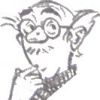-
2nd January 2007, 11:22 AM
#31
Senior Member
Senior Hubber

Originally Posted by
aravindhan

Originally Posted by
Prabhu Ram
What is wrong about making changes that expand the sounds we can pronounce:
I want to write George Bush in a way that, even if my reader doesn't know the name he will read iot right. Not as Saarchchu Bus.
Ironicaly 'Bus' is better written in Tamil than English, we need to figure a way around that too

From the 12th century up to around the 19th century, Tamils used to have a rather interesting way of writing when the subject matter required them to use a lot of Sanskrit words. They used to in effect write using both the Grantham script (which was basically a different script, with some letters similar to Tamil and others different, which Tamils used to write Sanskrit) and the normal Tamil vattezhuthu. If, therefore, they had to write the phrase "tirumaalin kamalanayangal", they would write 'tirumaalin' in the vattezhuthu, "kamalanayana" in the Grantha script, and "ngal" in the vattezhuthu. I have an old copy of a commentary on a portion of the amarakosha in Tamil, and they use this system. It works very well.
So an interesting solution to the problem, which may be a middle way, will be to readopt this system. We take the old Grantham script, and add a few letters to it to represent sounds which we need today, but which Sanskrit doesn't have (like "f", the flat "ö", the rounded "å", the flat "ä" or "æ", and so on). We then use it together with the Tamil vattezhuthu, just as was done when using Sanskrit words with Tamil.
Dear aravindhan,
CAn you send me a copy of this portion so that I may be able to see this mix of Grantha and vattezhutthu scripts via e-mail? This all sounds very interesting to me. Thank you.
My email address is:
skanthavelu@hotmail.com
-
2nd January 2007 11:22 AM
# ADS
Circuit advertisement

-
25th January 2007, 05:22 PM
#32
Junior Member
Admin HubberNewbie HubberTeam HubberModerator HubberPro Hubber

I just happened to come across this thread.
In this context i recollect one of my Tamil Vaathiyars telling me about the now-obsolete Ayutha ezhutthu during my school/college days.
He said, 'the main use of this letter was to differentiate the ka-kha, Ga-Gha, cha-chha etc. and these stronger kha,gha,cha were all basically combinations of ka+aha, ga+aha.....'
He also added that the Hindi/Sanskrit 'Am' was also indicated by the use of this letter.
He reasoned that
'the form of this letter is a combination of the dots used in the Hindi/Sanskrit letters 'Am' and 'Aha'....and thamizh didn't use Aa+m(indicated by a dot on top) or Aa+h(indicated by two dots on the side) as in sanskrit but combined them as one as 'Ah+Am' which became 'Ahdham' and then 'Ayudham''
'the letter was not to be used in its original form as we know it today, but only in combination....'
'the usage of the letter went out of fashion as it was difficult to use a dot on the palm leaves....'
Can anyone throw more light on this......?
Naga
Aha! magic dramas by "air"
-
29th January 2007, 06:24 AM
#33
Senior Member
Senior Hubber


Originally Posted by
skanthan
CAn you send me a copy of this portion so that I may be able to see this mix of Grantha and vattezhutthu scripts via e-mail? This all sounds very interesting to me. Thank you.
My email address is:
skanthavelu@hotmail.com
I don't have the book he was talking about, but you can see an example of how Grantha ezhuththu and the normal tamil characters were mixed to write manipravalam in this scanned page from another book (printed in 1918):
http://img15.imagevenue.com/img.php?..._122_144lo.jpg
Here is a transcription of the first few words of the second paragraph, which should give you an idea of how the two were mixed. I have bolded the Grantham letters in the transcription:
"ivanRiRattil nirupAdhika sarvasheshiyAy nirupAdhikasvatantranAy satyasankalpanumAna sarvEshvaran sarvabhayangaLukkum kAraNamAna nigrahasankalpattai..."
So, for example, we see in the word "sarvabhayangaLukkum " that the Sanskrit bit of the word ("sarvabhaya~") is written using Grantham letters, while the Tamil suffix "~ngaLukkum " is written using Tamil characters.
I think the Grantham letters are much prettier than the Devanagari letters, but I suppose I am just prejudiced. Not many people can read them today, so you will unfortunately no longer see modern books printed like this. A Tamil playwright tried to revive a modified form of this system some years ago to represent English loan words when writing Tamil, but I think it didn't catch on. I don't remember the name of the playwright or the play.
ni enna periya podalangai-nu ennama?
-
31st January 2007, 11:52 PM
#34
Senior Member
Senior Hubber
Thank you, podalangai! THat was indeed very interesting. 
Originally Posted by aravindhan





 Reply With Quote
Reply With Quote


Bookmarks